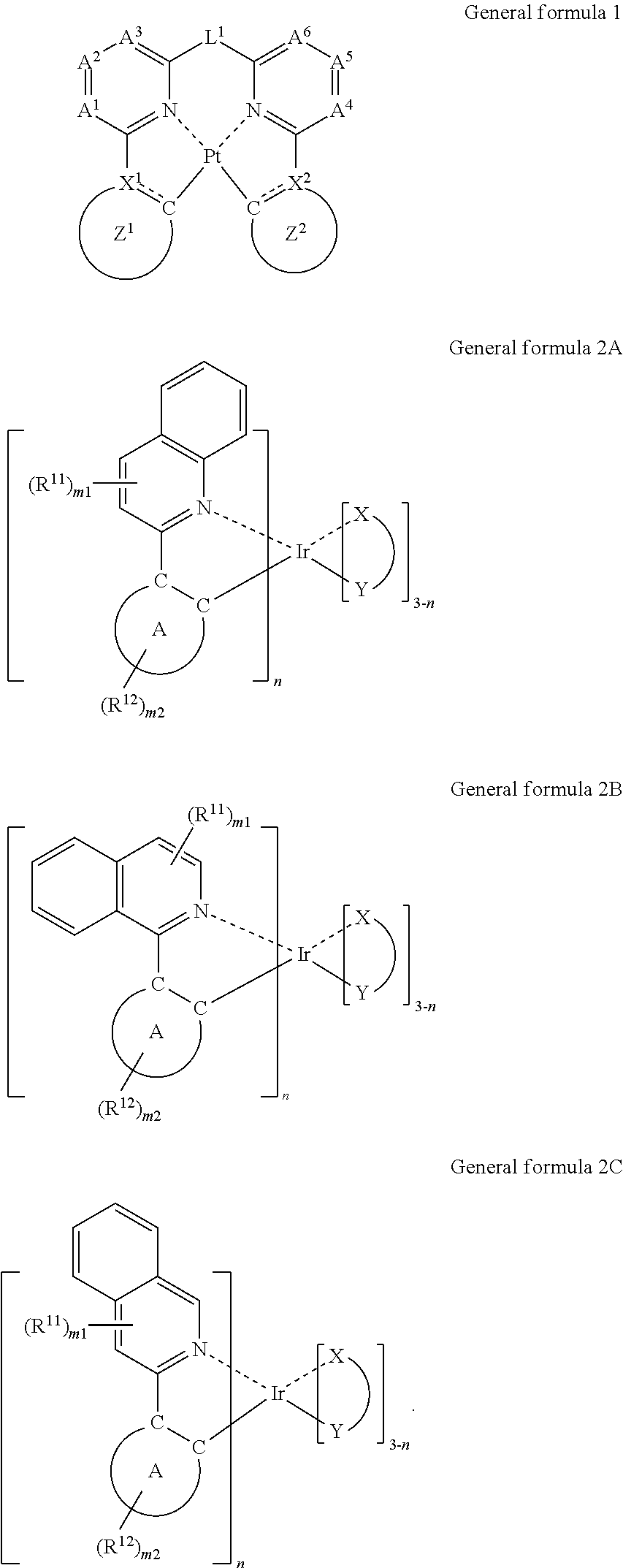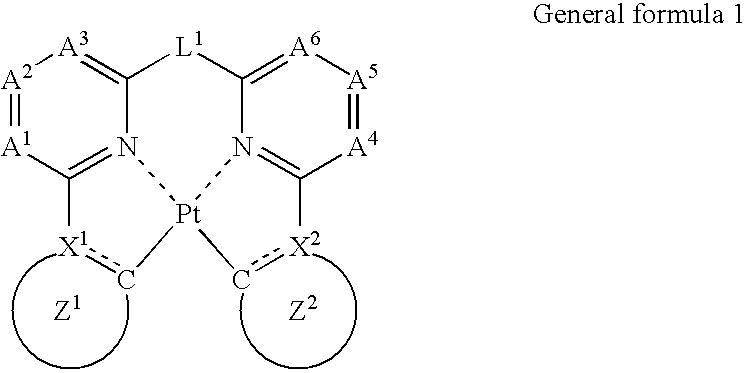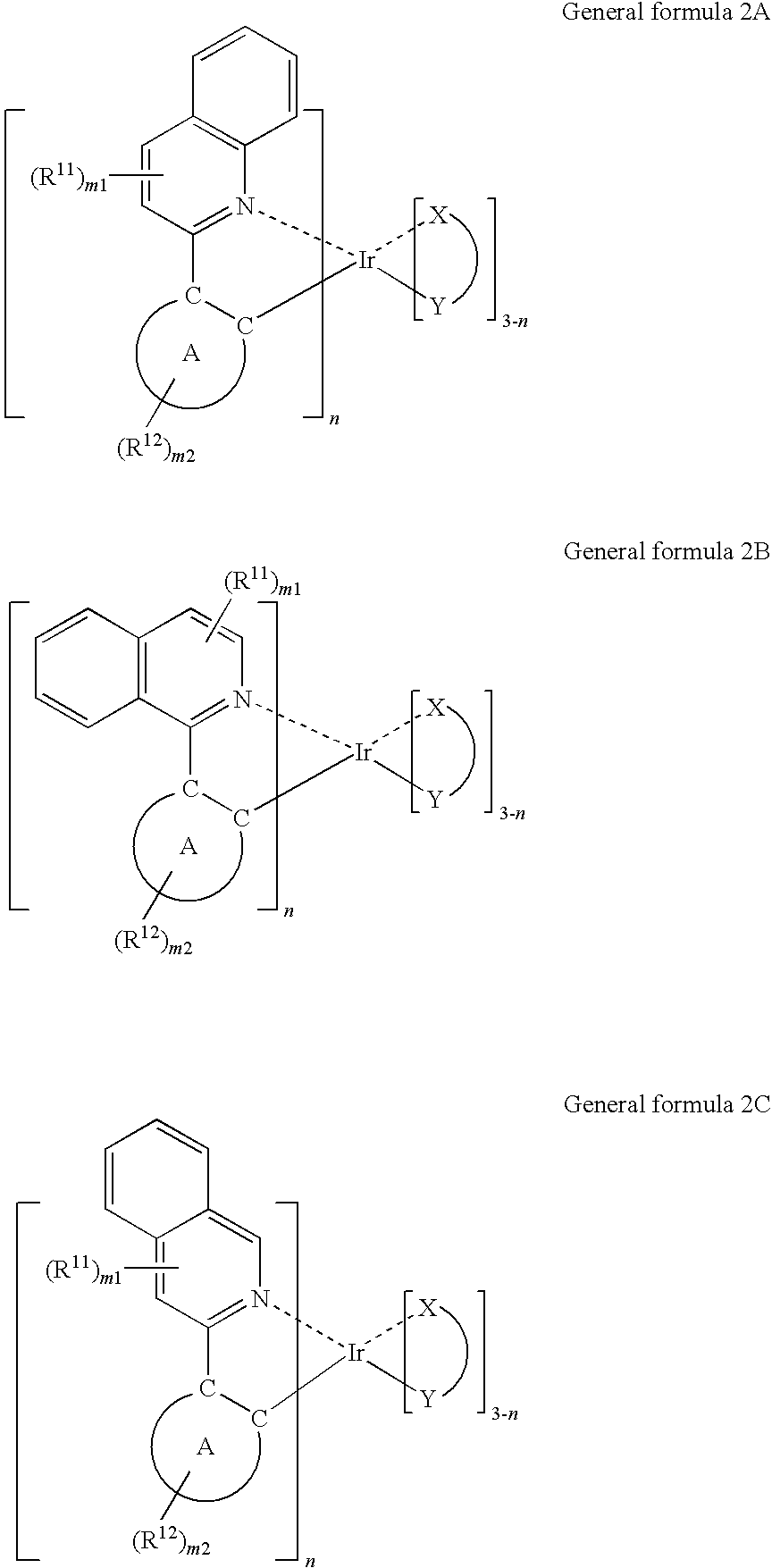Organic electroluminescence element
a technology of electroluminescence elements and organic elements, which is applied in the direction of discharge tubes/lamp details, discharge tubes luminescnet screens, thermoelectric devices, etc., can solve the problems of low luminance of emitted light, low emission efficiency, and high driving voltage of conventional organic electroluminescence elements, and achieve excellent endurance and high adaptability on production
- Summary
- Abstract
- Description
- Claims
- Application Information
AI Technical Summary
Benefits of technology
Problems solved by technology
Method used
Image
Examples
example 1
[0139]To a glass substrate on which indium tin oxide (ITO) transparent conductive film had been deposited in the thickness of 150 nm (a product of GEOMATEC Corporation), patterning was carried out by photolithography and hydrochloric acid etching so as to form an anode. The patterned ITO substrate was subjected to ultrasonic washing with acetone, washing with pure water, and ultrasonic washing isopropyl alcohol, followed by drying with nitrogen blow. The substrate was then finally subjected to UV-ozone washing. The washed substrate was placed in a vacuum deposition device, and the inner atmosphere of the device was evacuated until the degree of vacuum to be 2.7×10−4 Pa or less.
[0140]Then, a mixture of 2-TNATA and F4-TCNQ (a mixing ratio: 2-TNATA / F4-TCNQ=99 parts by mass / 1 part by mass) was heated within the device, and deposited at the deposition rate of 1 nm / sec. to form a hole-injection layer having a thickness of 130 nm.
[0141]On the obtained hole-injection layer, 4,4′-bis[N-(1-na...
example 2
[0158]An organic EL element of Example 2 was prepared in the same manner as in Example 1, provided that the blue phosphorescent light-emitting material A used in Example 1 was replaced with the blue phosphorescent light-emitting material B expressed by the following structural formula. The obtained organic EL element was subjected to the endurance test and color shift test in the manner mentioned above. The results are shown in Table 1.
[0159]
example 3
[0160]An organic EL element of Example 3 was prepared in the same manner as in Example 1, provided that the charge-transporting material A used in Example 1 was replaced with the charge-transporting material B expressed by the following structural formula. The obtained organic EL element was subjected to the endurance test and color shift test in the manner mentioned above. The results are shown in Table 1.
[0161]
PUM
 Login to View More
Login to View More Abstract
Description
Claims
Application Information
 Login to View More
Login to View More - R&D
- Intellectual Property
- Life Sciences
- Materials
- Tech Scout
- Unparalleled Data Quality
- Higher Quality Content
- 60% Fewer Hallucinations
Browse by: Latest US Patents, China's latest patents, Technical Efficacy Thesaurus, Application Domain, Technology Topic, Popular Technical Reports.
© 2025 PatSnap. All rights reserved.Legal|Privacy policy|Modern Slavery Act Transparency Statement|Sitemap|About US| Contact US: help@patsnap.com



